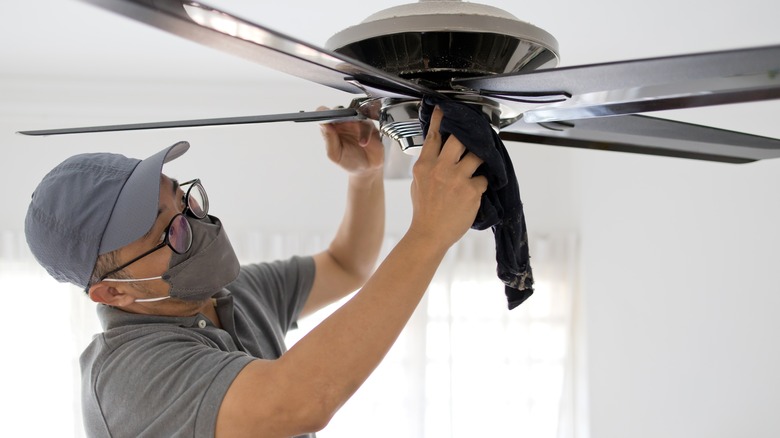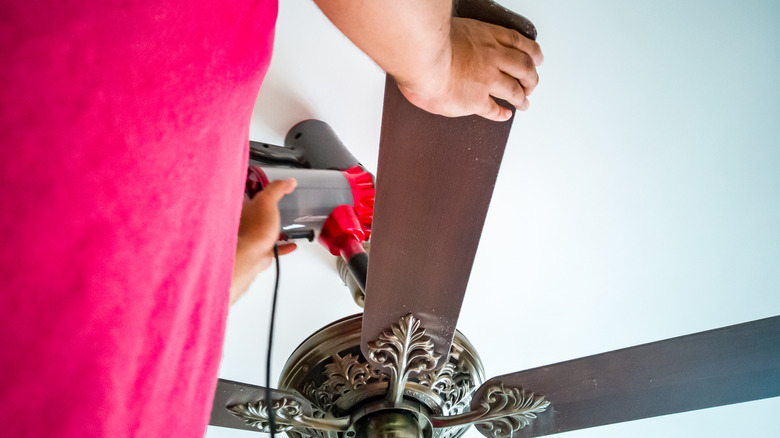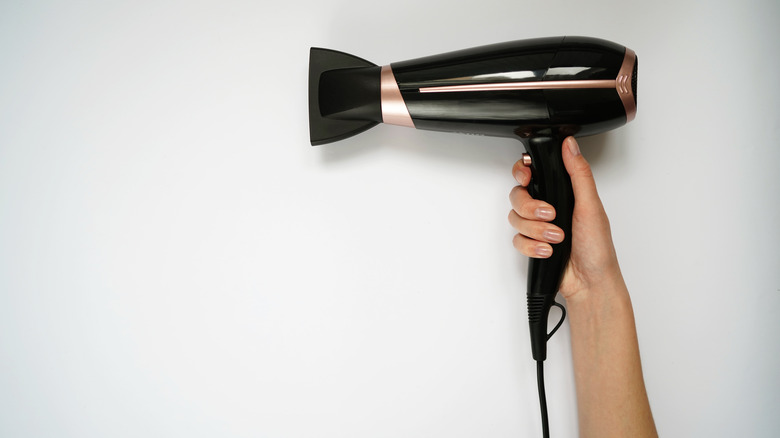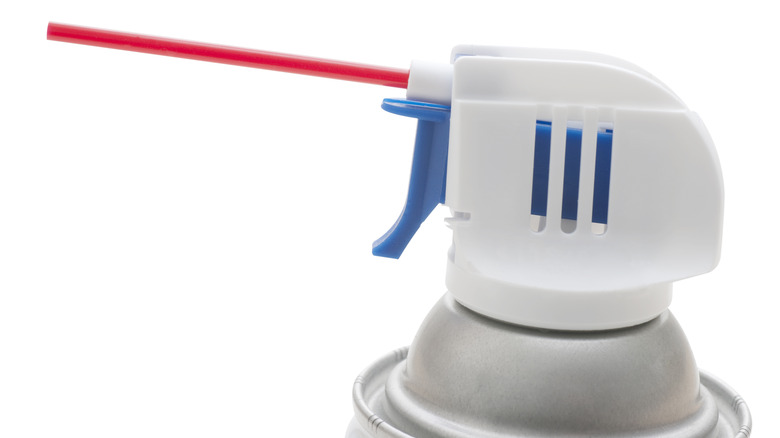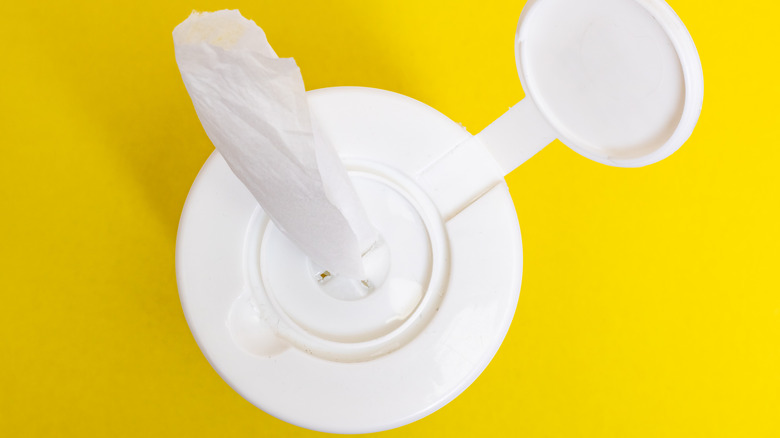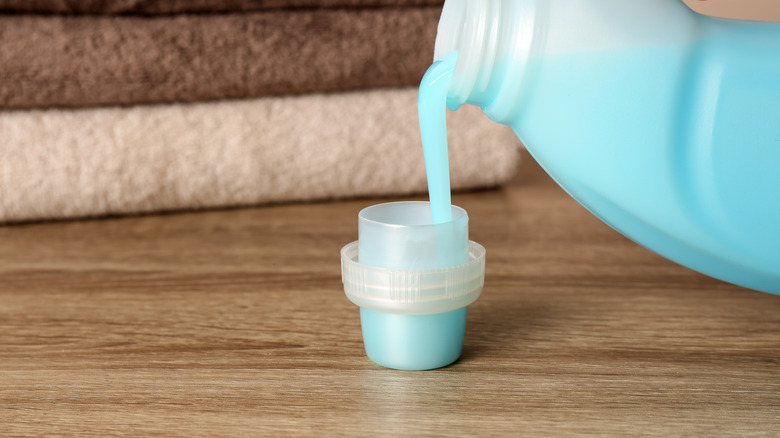8 Easy Hacks That Will Keep Your Ceiling Fan Dust Free
Unfortunately, having a dirty ceiling fan is pretty common. In addition to looking icky, every time you turn it on, it can spin dust particles around your room and lower the air quality. Instead of focusing on traditional ways to clean your ceiling fan, consider unique hacks that will keep it dust-free with minimal effort.
As a bonus, some of these methods will reduce how often you have to clean your fan between dust build-ups. From the simple trick of using pillowcases to trap dust right off the blades to using anti-static sprays to repel dust and keep it from sticking to the fan, these hacks embody efficiency. However, you also have to understand what you should avoid doing. While massively popular online, some methods might fall short of the miracle fix they promise.
The last thing you want to do is waste your resources and time on tricks that don't work or create a bigger mess to clean up. The goal is to help you cut through the noise and focus on tried-and-true cleaning methods that ward dust away, so you can use a clean fan without the unnecessary hassle of frequent cleanings.
Trap dust with a pillowcase
Trapping dust in a pillowcase is one of the best ways to clean fans, because it's quick and uses a household item you already have sitting in your closet. It works so well because of the pillowcase's fabric; it collects dust and traps it when you slip it over the blade so it doesn't escape and float through the air. As you slowly pull the pillowcase along, it forms a cloth bag that contains all the grime and dust to make cleanup quick. However, it doesn't work well if you have a large amount of grime and dust buildup or larger fan blades, as removing it may take several passes.
To use a pillowcase to pull dust from the ceiling fan blades, pick out one you don't mind getting dirty. Switch the fan off and ensure the blades are stationary, then get a stable ladder or stool to help you reach the fan. Slide the open end of your pillowcase over the blades, ensuring you cover the whole thing. With one hand, hold the outside of the pillowcase and use your other hand to gently push against the blade from the inside of the case. This makes the dust cling to the fabric, and you'll carefully slide it along the blade's length. Repeat the process with the other blades before taking the pillowcase outside, turning it inside out, and shaking out the excess dust before washing.
Use dryer sheets to repel dust
Even though you typically use dryer sheets to reduce static as your clothing dries, they're excellent for warding off dust. Wiping down your fan blades with them removes the existing dusty layer, leaving a thin coating that helps prevent dust from returning. This works because fabric sheets drop the static cling levels on the blades, warding off floating dust particles. You can go longer between cleaning sessions without getting a dirty buildup.
Switch the fan off and give the blades time to stop before you try to clean them. Get a step stool that's tall enough you can reach the blades comfortably. Take a fresh dryer sheet, firmly wrap it around the blade, and slide it from the center to the edge. Repeat on the top and bottom of all the blades to catch all the dust, using a new sheet for each one. Using this hack sparingly will put a nice dust-repellent layer on the blades. If you use it too often, though, it may leave a sticky residue that attracts dust instead.
Remove dust with a vacuum and a brush attachment
You may not know you can clean a ceiling fan with your vacuum. This hack works because the vacuum's suction power pulls the dust and debris from the blade, preventing it from just being pushed off and floating around in the air. The brush attachment is very effective because the bristles gently agitate the dust, letting the vacuum pick it up. It's a great way to clean high ceiling fans, or if you don't want to climb on a stool or ladder and risk falling.
To strip the dust from the fan blades, ensure your vacuum comes with the brush attachment and you set it to a moderate suction level. You may need an extension hose or wand to reach higher ceilings. Put the brush attachment to one edge of the blade and move it along with steady, smooth motions to suck the dust off without disturbing it so it falls. Put the attachment in the middle of the blade and work your way toward the tip, doing both sides before you move on. Also, use a light hand with this hack because you can bend or break the blades if you push it — let the attachment do the work.
A blow dryer eliminates loose dust
Along with removing stubborn dryer lint from clothing, a blow dryer is a quick and effective way to eliminate loose dust. It uses a direct stream of air to dislodge and blow away dust particles that are sitting on the blades' surfaces. By putting it on the cool setting, you won't risk having heat damage to your fan or any surrounding fixtures. It works well for fast cleanup when you don't have time to dust thoroughly, and it's a great way to do light maintenance dusting between deeper cleans to keep the fan looking neat.
Turn your ceiling fan off and let it stop spinning. While this is happening, get a blow dryer with a cool air setting, plug it in, and stand on a ladder or step stool to reach the fan. Hold it a few inches from the blade and switch on the cool setting before slowly moving it back and forth along the blades' length, covering the whole thing. The airflow will push the loose dust off the blades and into the air. As one blade gets clean, rotate the fan slowly until you clean the dusty layer off all the blades. Since the dust will go airborne, cover any items it could land on with a sheet, and consider vacuuming the room when you finish to catch stray dust. Though this hack let's you easily clean the fan, it does likely require further room cleaning of all the dust that has been blown off.
Compressed air removes dust from the motor housing
Using compressed air, especially canned air you use to clean electronics, is an efficient way to remove dust from your ceiling fan's motor housing and the blades. High air pressure is the key to this hack, and it can dislodge and get rid of dust particles around delicate components or in hard-to-reach areas. This is a great way to clean the motor housing, because dust can build up to the point that it negatively impacts your fan's performance and can make it overheat.
Ensure you have good ventilation before you start this project. If possible, switch on an exhaust fan or open your windows to help disperse the dust the canned air dislodges. Hold the can of compressed air 4 to 6 inches away from the housing to avoid pushing dust deeper into the motor. Aim the nozzle at the motor housing and fan blades and release short bursts of air. Manually rotate the fan to use different angles to hit all surfaces, and pay special attention to any crevices or vents around the housing because they tend to pick up a lot of dust. Finish by running the vacuum with a brush attachment over the blades and around the room to pick up any stray dust. Be careful with this hack and take your time, as spraying it too close to the fan will force dust deeper into the machine, which could cause bigger problems later.
Add a protective coating with car wax spray
You may already know you can put car wax on your stovetop to make cleaning easier, and now you can add ceiling fan blades to the list, too. It'll leave a nice, glossy finish, while creating a dust-repellent surface. Car wax is designed to protect and enhance your car's exterior by creating a thin barrier against the elements. It works similarly on ceiling fan blades, lowering the amount of static electricity present. Since this attracts dust particles, it keeps the fan clean for longer. This works nicely as a finishing touch after you clean the fan, as long as you ensure the blades are dry so you don't get an uneven coating or big streaks.
To protect your ceiling fan blades with a car wax spray, thoroughly clean the fan to remove any grime or dust and allow it to air dry. Get a soft, clean cloth and a can of car wax and put a small amount on the fabric. You don't want to spray it directly onto the blades, as it's easy to overdo it or get an uneven layer. Gently buff each fan blade with the cloth, applying a thin, even layer, ensuring you cover every part of the blade. Use the same motion when you polish furniture and work in circular, smooth motions. Once you apply it, let it sit for a few minutes before buffing it to get the best shine possible.
Use baby wipes to remove grime
Baby wipes are great for cleaning keyboards and office spaces, because they work on delicate surfaces without causing damage with their mild cleaning solution. Also, the wipes come pre-moistened, letting them grab dust particles while the soft texture won't damage or scratch the fan blades. Baby wipes also evaporate quickly to ensure no residue is left to attract more dust, keeping the blades smooth and clean. It works well for routine maintenance instead of heavy-duty cleaning, and you want to ensure you use only semi-moist wipes so you don't end up with moisture damage.
Your fan has to be off for this to work effectively, and you want to be able to reach it by standing on the floor or a stable step stool. Take a fresh baby wipe and gently wrap it around the blade's edge, starting at the base by the motor and wiping slowly to the end. Use gentle pressure to lift the grime; you may need more than one wipe to clean the blades. Clean the bottom and top of each blade and leave them to fully dry. A word of caution: Only use baby wipes if the fan is dusty and not greasy, as they won't be able to cut through the grease.
Make a dust-repellent spray
There is a fabric softener hack to help you keep your fan blades dust-free for longer. The spray has anti-static properties that stop dust and airborne particles from sticking to the blades. It's like applying a thin shield that repels dust, and it's an efficient way to minimize how much you have to clean. It's especially helpful if you live in a dust-prone area or have pets, because you're fighting a constant battle to keep your space clean. You want to ensure the spray you make is safe to use with whatever material your fan blades are made of to ensure you don't discolor or damage them.
Before using this spray, the fan must be clean and dry. While it's drying, mix four parts water with one part fabric softener in a spray bottle and shaking it to mix it (via Maids by Trade). Get a clean, lint-free cloth and spray the mixture onto it to get it damp before you wipe the blades. Use a light hand, because soaking the blades can cause moisture damage. Cover the whole blade as you wipe it to create a thin, invisible layer of anti-static agent that repels dust. Give it a few minutes to dry before you switch the fan back on, and reapply it every few weeks to keep the dust accumulation as low as possible.
